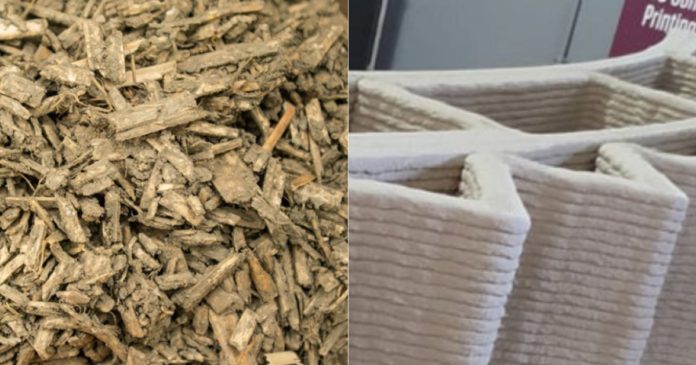Under a project funded by the U.S. Department of Energy, researchers at Texas A&M University are working to 3D print buildings using hempcrete.
Hempcrete has been used for thousands of years for construction purposes – and not a lot has changed in the mix during that time. The versatile building material primarily consists of hemp hurd/shiv, – the woody core of the hemp plant – lime and sand.
Hempcrete offers a number of advantages in building; including being breathable, a high insulation value, high fire resistance, insect and mold resistance and good sound dampening attributes.
Additionally, while conventional concrete production is energy and carbon emissions intensive, hempcrete has a net carbon-negative environmental effect. This means hempcrete can absorb more carbon from the atmosphere than released during production and construction.
Supporting the Texas A&M University’s work in 3D printing hempcrete is a $3.74 million grant from the Department of Energy under the HESTIA program. This program aims to support the development of technologies that cancel out embodied emissions while transforming buildings into net carbon storage structures.
The Texas A&M University team is being led by Petros Sideris, assistant professor in the Zachry Department of Civil and Environmental Engineering. Other team members include Manish Dixit, associate professor of construction science,Wei Yan, professor of architecture, Maria Koliou, assistant professor of engineering, Professor Zachary Grasley and Anand Puppala, professor of engineering. .
Hestia was the Greek goddess of the hearth, home, and hospitality; but in this case it stands for Harnessing Emissions into Structures Taking Inputs from the Atmosphere. Someone at the DoE put a lot of thought into making that acronym work.
“This is a unique opportunity for researchers to advance clean energy materials to tackle one of the hardest to decarbonize sectors that is responsible for roughly 10% of total annual emissions in the United States,” said U.S. Secretary of Energy Jennifer M. Granholm when announcing the grants last month.
The DOE is providing a total of $39 million in awards for 18 projects. Texas A&M University’s project was the only hemp-related initiative to score a guernsey. A full list of the beneficiaries along with project descriptions can be found here.
Discover more about the benefits of building with hemp and its applications in construction.


